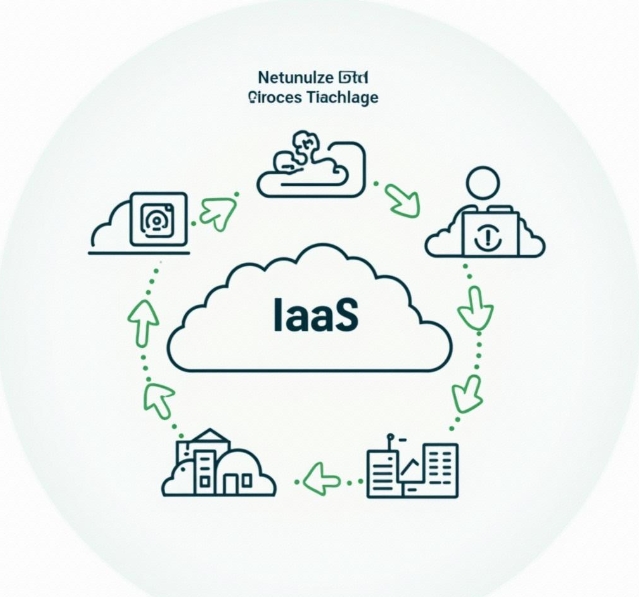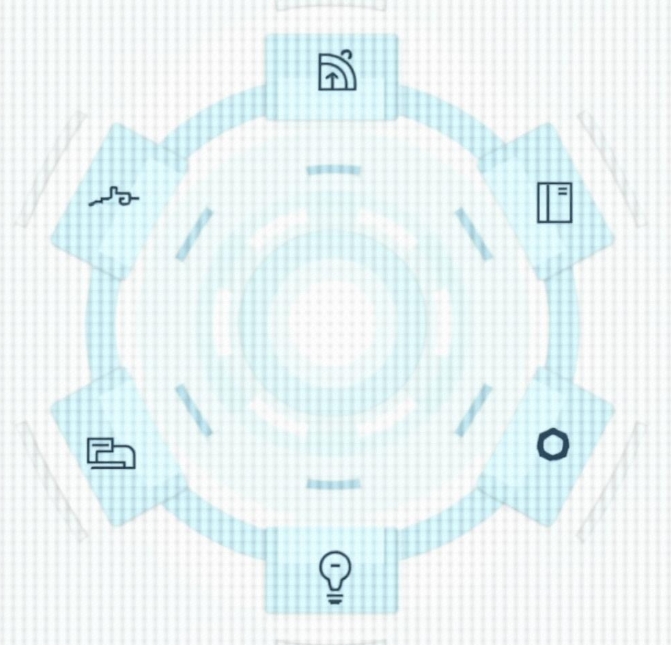Cloud Computing Service Models: Differences and Choices Among IaaS, PaaS, and SaaS
- latest articles
- 1.DApp Development & Customization: Merging Diverse Market Needs with User Experience 2.Analysis of the Core Technical System in DApp Project Development 3.How to achieve cross-chain interoperability in Web3 projects? 4.How does the tokenization of points reconstruct the e-commerce ecosystem? 5.How to Set and Track Data Metrics for a Points Mall? 6.What is DApp Development? Core Concepts and Technical Analysis 7.Inventory of commonly used Web3 development tools and usage tips 8.Development of a Distribution System Integrated with Social E-commerce 9.Six Key Steps for Businesses to Build a Points Mall System 10.What is DApp Development? A Comprehensive Guide from Concept to Implementation
- Popular Articles
- 1.Future Trends and Technology Predictions for APP Development in 2025 2.Analysis of the DeFi Ecosystem: How Developers Can Participate in Decentralized Finance Innovation 3.From Zero to One: How PI Mall Revolutionizes the Traditional E-commerce Model 4.DAPP Development | Best Practices for Professional Customization and Rapid Launch 5.Recommended by the Web3 developer community: the most noteworthy forums and resources 6.From Cloud Computing to Computing Power Leasing: Building a Flexible and Scalable Computing Resource Platform 7.How to Develop a Successful Douyin Mini Program: Technical Architecture and Best Practices 8.Shared Bike System APP: The Convenient Choice in the Era of Smart Travel 9.How to Create a Successful Dating App: From Needs Analysis to User Experience Design 10.From Design to Development: The Complete Process of Bringing an APP Idea to Life
With the rapid development of internet technology and the continuous increase in computing demands, cloud computing has become an essential component of modern IT architecture. Both enterprise and individual users can access efficient, flexible, and cost-effective computing resources through cloud computing platforms. Cloud computing services are typically divided into three basic models: Infrastructure as a Service (IaaS), Platform as a Service (PaaS), and Software as a Service (SaaS). Each of these service models has its unique advantages and application scenarios, so it is crucial to understand their differences and appropriate use cases when selecting the right cloud service. This article will explore the distinct characteristics of IaaS, PaaS, and SaaS in detail, helping businesses and developers make the best choices.
I. Overview of Cloud Computing Service Models
Cloud computing service models can be categorized into IaaS, PaaS, and SaaS based on demand and management levels, representing different layers of cloud computing services.
IaaS (Infrastructure as a Service): Provides fundamental computing resources such as virtual machines, storage, and networking. IaaS users can access and manage these resources over the network to meet their computing needs.
PaaS (Platform as a Service): Offers a platform for developing and deploying applications, including operating systems, middleware, databases, and development tools. PaaS allows developers to focus on application development without worrying about managing the underlying infrastructure.
SaaS (Software as a Service): Delivers fully integrated applications that users access via the internet without concern for backend hardware and software maintenance. Common SaaS applications include email, CRM systems, and office software.
Below, we will analyze the specific content, differences, and applicable scenarios of these three service models in detail.

II. IaaS: Infrastructure as a Service
IaaS (Infrastructure as a Service) is the foundational layer of cloud computing service models. It provides users with virtualized computing resources that can be used and scaled on demand.
1. Basic Characteristics of IaaS
Elastic Computing Resources: Users can dynamically adjust the quantity and performance of computing resources based on demand. For example, they can increase the number of virtual machines to handle traffic peaks or reduce resources to save costs.
Pay-as-You-Go: IaaS typically adopts a usage-based billing model, where users only pay for the computing, storage, and network resources they actually use, avoiding the high initial investment of traditional IT infrastructure.
Fully Managed Service: IaaS providers are responsible for managing the underlying hardware, networking, and virtualization platforms, freeing users from maintaining physical equipment.
2. Advantages of IaaS
Flexibility and Scalability: Users can flexibly choose computing, storage, and networking resources based on business needs, enabling rapid scaling up or down.
Reduced IT Expenses: Users do not need to purchase or maintain physical hardware, paying only for the cloud service resources they use, thereby lowering IT costs.
Convenient Deployment and Management: Users only need to focus on managing the operating system, applications, and other software layers, saving effort on hardware management.
3. Applicable Scenarios for IaaS
IaaS is suitable for large enterprises, developers, and IT service providers that require high customization and flexibility. Here are some typical application scenarios:
Large-Scale Computing Tasks: Such as data analysis, big data processing, and scientific computing.
Development and Testing Environments: Developers can use IaaS to quickly set up development and testing environments for application development and performance testing.
Disaster Recovery and Backup: Enterprises can implement rapid data backup and disaster recovery solutions through IaaS to ensure business continuity.
III. PaaS: Platform as a Service
PaaS (Platform as a Service) provides a platform for developing and deploying applications, allowing users to focus on application development without worrying about the underlying hardware and operating system.
1. Basic Characteristics of PaaS
Development Tools and Frameworks: PaaS platforms typically offer a rich set of development tools, frameworks, and middleware, enabling developers to quickly build and deploy applications.
Automated Management: PaaS platforms handle operating system management, application deployment, and maintenance, reducing the operational workload for developers.
Support for Multiple Programming Languages: PaaS supports various programming languages and development frameworks, allowing developers to choose the toolchain that best fits their project.
2. Advantages of PaaS
Accelerated Development Process: Developers can use the tools and frameworks provided by the platform to quickly set up applications, saving development time.
Reduced Operational Workload: PaaS platforms automatically handle underlying operating system and middleware updates, fault repairs, and other issues, allowing developers to focus on application logic.
High Scalability: PaaS platforms typically offer auto-scaling capabilities, automatically adjusting resources when application traffic increases to ensure availability and performance.
3. Applicable Scenarios for PaaS
PaaS is suitable for enterprises and development teams that need to quickly develop, deploy, and maintain applications. Here are some typical application scenarios:
Web Application Development: Developers can use PaaS to rapidly develop and deploy web applications, supporting various programming languages and frameworks.
Mobile App Backend: The tools and services provided by PaaS platforms are ideal for developing mobile app backends, helping developers efficiently implement features like user authentication and data storage.
Microservices Architecture: PaaS supports microservices architecture, allowing developers to manage multiple microservice applications through the platform, enabling automated communication and scheduling between services.

IV. SaaS: Software as a Service
SaaS (Software as a Service) is the highest level of cloud computing services, providing users with complete applications that they can access and use via a browser or client.
1. Basic Characteristics of SaaS
No Installation or Maintenance Required: SaaS applications do not require any installation or configuration by users; all operations can be accessed via the internet.
Subscription-Based: SaaS typically uses a subscription model, where users pay monthly or annually to access various features of the cloud-based application.
Automatic Updates and Maintenance: SaaS providers are responsible for software updates, maintenance, and security, so users do not need to worry about version upgrades or security vulnerabilities.
2. Advantages of SaaS
Simple and Easy to Use: SaaS applications usually have user-friendly interfaces, allowing users to quickly start using them by simply logging into their accounts.
Low Cost and Low Risk: SaaS eliminates the need for users to purchase hardware devices and software licenses, requiring only usage fees, which reduces IT investment for enterprises.
High Availability and Reliability: SaaS applications are typically hosted on cloud platforms with high availability and disaster recovery capabilities, ensuring user data security and continuous business operations.
3. Applicable Scenarios for SaaS
SaaS is suitable for enterprises or individuals needing standardized, easy-to-manage applications. Common application scenarios include:
Enterprise Management Software: Such as CRM (Customer Relationship Management) and ERP (Enterprise Resource Planning), helping businesses improve operational efficiency.
Collaboration and Communication Tools: Such as email, instant messaging, and video conferencing, facilitating communication and collaboration within teams.
Office Software: Such as online document editing, spreadsheet processing, and file sharing, meeting daily office needs.
V. Differences Between IaaS, PaaS, and SaaS
Although IaaS, PaaS, and SaaS are all cloud computing service models, their differences are mainly reflected in the service level, management responsibility, and application flexibility.
Service Level: IaaS provides underlying infrastructure, PaaS provides a development platform, and SaaS provides complete applications.
Management Responsibility: In IaaS, users are responsible for managing the operating system and applications; in PaaS, the platform provider manages the operating system and middleware; in SaaS, the provider fully manages the application's operation and maintenance.
Flexibility and Customization: IaaS offers the highest flexibility, allowing users to freely configure resources as needed; PaaS is relatively less flexible, focusing more on development through platform-provided tools; SaaS is the least flexible, with users only able to use the provided functions and interfaces.
VI. How to Choose the Right Cloud Service Model
Choosing the right cloud service model mainly depends on the needs, technical capabilities, and budget of the enterprise or individual. Here are some considerations when selecting a cloud service model:
Development Needs: If an enterprise requires full control over underlying resources and custom applications, IaaS is a good choice; if the focus is on accelerating application development and reducing operational burden, PaaS is suitable; if the enterprise only needs standardized application software, SaaS is the best option.
Technical Capabilities: If the development team has sufficient technical capabilities to manage infrastructure, IaaS may be more suitable; if the team wants to focus on application logic without managing the underlying platform, PaaS is more appropriate; if the enterprise aims to minimize technical management and focus on business, SaaS is the ideal choice.
Cost Considerations: IaaS may require higher initial investment, while PaaS and SaaS typically use pay-as-you-go models, allowing flexible choices based on the enterprise's budget.
VII. Conclusion
IaaS, PaaS, and SaaS are the three main forms of cloud computing service models, each with its unique advantages and applicable scenarios. When choosing the appropriate service model, enterprises should comprehensively consider their own needs, technical capabilities, and budget. By rationally selecting a cloud service model, enterprises can not only reduce IT costs but also enhance business flexibility and accelerate market response, thereby gaining a greater competitive advantage.
-

Applications and Challenges of Cloud Computing in the Internet of Things (IoT)
With the continuous advancement of information technology, cloud computing and t···
-

Integration of Cloud Computing and Artificial Intelligence: Enhancing Intelligent Applications
With the rapid advancement of technology, cloud computing and artificial intelli···
-

Data Security and Privacy Protection in Cloud Computing Applications
With the continuous advancement of information technology and the rapid developm···

 Blockchain
Blockchain










